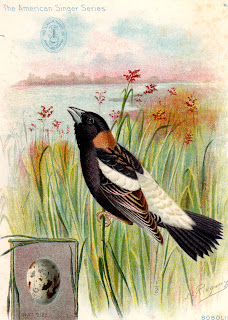

Another improvement was the appearance of an alula, used to achieve better control of landing or flight at low speeds. The Cretaceous saw the rise of more modern birds with a more rigid ribcage with a carina and shoulders able to allow for a powerful upstroke, essential to sustained powered flight. The loss of a long tail was followed by a rapid evolution of their legs which evolved to become highly versatile and adaptable tools that opened up new ecological niches. Though their wings resembled those of many modern bird groups, they retained the clawed wings and a snout with teeth rather than a beak in most forms. A large group of birds, the Enantiornithes, evolved into ecological niches similar to those of modern birds and flourished throughout the Mesozoic. While keeping the clawed fingers, perhaps for climbing, it had a pygostyle tail, though longer than in modern birds. Confuciusornis is an example of their trend. The first element to disappear was the bony tail, being reduced to a pygostyle and the tail function taken over by feathers. The evolutionary trend among birds has been the reduction of anatomical elements to save weight. Reconstruction of Iberomesornis romerali, a toothed enantiornithe This theory is contested by most other paleontologists and experts in feather development and evolution. In fact, a bird-like hip structure also developed a third time among a peculiar group of theropods, the Therizinosauridae.Īn alternate theory to the dinosaurian origin of birds, espoused by a few scientists, notably Larry Martin and Alan Feduccia, states that birds (including maniraptoran "dinosaurs") evolved from early archosaurs like Longisquama.


They thus arrived at their hip structure condition independently. Īlthough ornithischian (bird-hipped) dinosaurs share the same hip structure as birds, birds actually originated from the saurischian (lizard-hipped) dinosaurs if the dinosaurian origin theory is correct. The discoveries of further basal dromaeosaurids potentially capable of powered flight, such as Xiaotingia, has provided more evidence for the theory that flight was first developed in the bird line by early dromaeosaurids rather than later by Aves as was previously supposed. Because some basal members of Dromaeosauridae, including Microraptor, were capable of powered flight, some paleontologists have suggested that dromaeosaurids are actually derived from a flying ancestor, and that the larger members became secondarily flightless, mirroring the loss of flight in modern paleognaths like the ostrich.

Cryptovolans seems to make a better "bird" than Archaeopteryx which lacks some of these modern bird features. Cryptovolans, a dromaeosaurid found in 2002 (which may be a junior synonym of Microraptor) was capable of powered flight, possessed a sternal keel and had ribs with uncinate processes. This has contributed to this ambiguity of where to draw the line between birds and reptiles. The mounted skeleton of a Velociraptor, showing the very bird-like quality of the smaller theropod dinosaursĭiscoveries in northeast China ( Liaoning Province) demonstrate that many small theropod dinosaurs did indeed have feathers, among them the compsognathid Sinosauropteryx and the microraptorian dromaeosaurid Sinornithosaurus. Currently, the relationship between dinosaurs, Archaeopteryx, and modern birds is still under debate. If the latter classification is used then the larger group is termed Avialae. Phylogenetically, Aves is usually defined as all descendants of the most recent common ancestor of a specific modern bird species (such as the house sparrow, Passer domesticus), and either Archaeopteryx, or some prehistoric species closer to Neornithes (to avoid the problems caused by the unclear relationships of Archaeopteryx to other theropods). Four distinct lineages of bird survived the Cretaceous–Paleogene extinction event 66 million years ago, giving rise to ostriches and relatives ( Paleognathae), ducks and relatives ( Anseriformes), ground-living fowl ( Galliformes), and "modern birds" ( Neoaves). According to the current consensus, Aves and a sister group, the order Crocodilia, together are the sole living members of an unranked reptile clade, the Archosauria. Modern phylogenies place birds in the dinosaur clade Theropoda. For more than a century, the small theropod dinosaur Archaeopteryx lithographica from the Late Jurassic period was considered to have been the earliest bird. Birds are categorized as a biological class, Aves. The evolution of birds began in the Jurassic Period, with the earliest birds derived from a clade of theropod dinosaurs named Paraves.


 0 kommentar(er)
0 kommentar(er)
